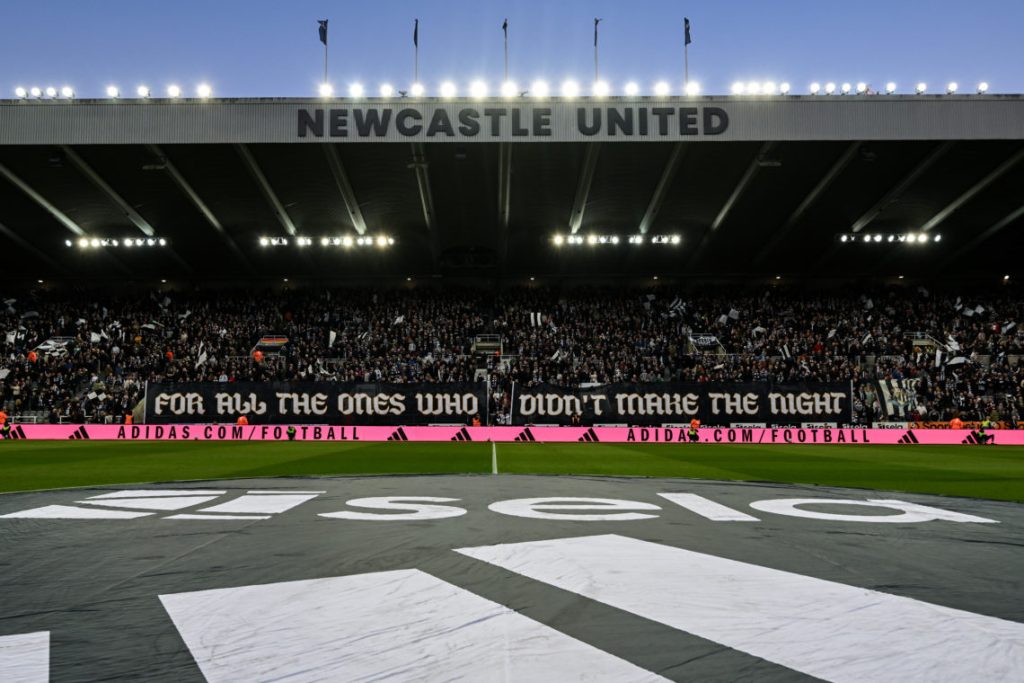The battle for Premier League supremacy extends far beyond the pitch as Newcastle United and Aston Villa embark on transformative stadium projects that could redefine their futures.
While Villa recently unveiled £100 million redevelopment plans for Villa Park, Newcastle’s Saudi-backed ownership contemplates an even more ambitious vision that could see St James’ Park either dramatically expanded or completely rebuilt at staggering cost.
Villa’s announcement focuses on modernizing their historic ground, with particular emphasis on revamping the North Stand to increase capacity and enhance facilities.
This measured approach reflects sensible, incremental growth for a club establishing itself as a consistent European contender. Yet it pales in comparison to the seismic transformation Newcastle’s owners could unleash.
Early discussions suggest PIF are considering options that would either expand St James’ Park to 68,000 seats – making it England’s second-largest club stadium – or construct an entirely new £1.2 billion venue.
The scale of Newcastle’s potential project becomes clear when comparing numbers. Villa’s £100 million investment would represent just 8% of the projected cost for Newcastle’s new stadium.
Even expanding the existing St James’ Park would likely require investment dwarfing Villa’s plans. This financial chasm underscores the different trajectories these ambitious clubs are pursuing, with Newcastle’s owners signaling their willingness to spend at levels previously unseen outside Manchester or London.
Newcastle’s staggering Carabao Cup victory parade demonstrated the untapped potential of their fanbase, as hundreds of thousands flooded the city streets in celebration.

This display of Geordie passion removed any doubts about the club’s ability to fill a significantly larger venue. While Villa’s redevelopment sensibly addresses immediate needs, Newcastle’s ownership appears to be playing a different game entirely – one where infrastructure becomes both statement of intent and financial engine for sustained success.
The timing of these projects coincides with a pivotal moment in both clubs’ on-field ambitions. Newcastle’s recent 4-1 defeat to Villa dealt a blow to their Champions League hopes, though Villa’s subsequent loss to Manchester City reopened the race.
These results highlight how closely matched the clubs currently are in sporting terms, even as their off-field visions diverge dramatically.
For Villa, the stadium plans represent prudent evolution – upgrading facilities to generate additional revenue while preserving the intimate atmosphere that makes Villa Park special.
For Newcastle, the potential projects symbolize something far more transformative – an opportunity to create a world-class venue befitting what the owners hope will become a world-class club.
The Premier League’s stadium landscape hasn’t seen such ambitious proposals since Tottenham’s move to their new stadium in 2019. Should Newcastle proceed with either expansion or new construction, it would represent the most significant infrastructure project in English football since Manchester City’s Etihad Campus development.
The financial implications could be profound, with matchday revenues potentially doubling or tripling from current levels.
Villa’s approach reflects the careful, sustainable growth model that has served them well under NSWE’s ownership. Newcastle’s potential megaproject embodies the disruptive ambition of sovereign wealth investment in football.
Both strategies have merit, but only one has the capacity to fundamentally alter the Premier League’s hierarchy of commercial power.
As these parallel projects develop, they raise fascinating questions about modern football’s direction. How much does stadium capacity influence a club’s ceiling?
Can historic grounds like Villa Park compete with state-of-the-art new builds? And at what point does commercial ambition risk alienating traditional matchgoing fans?
One thing is certain – the coming years will test whether measured, organic growth can compete with the transformative power of bottomless investment.
Villa’s sensible redevelopment may secure their place as top-six regulars, but Newcastle’s potential stadium revolution could propel them into an entirely different stratosphere. The stadium arms race has begun, and its consequences will reverberate through English football for decades to come.

